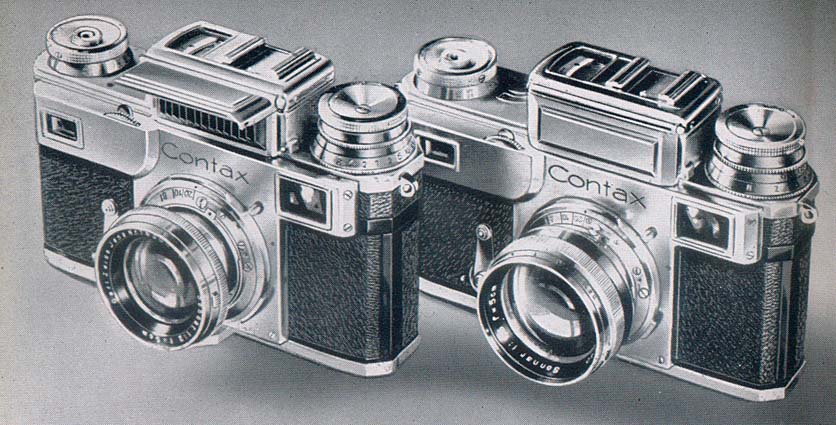by TRA
The History of the Pentacon Six
To tell the history of the Pentacon Six, we will look at three things:
- the origins of the name “Pentacon”
- the inspiration for a “T-shaped” Medium Format SLR
- the development of the detailed camera design principles and solutions.
The Contax I, II and III
In 1932 the company Zeiss Ikon in Dresden designed a sophisticated 35mm rangefinder camera that they named the “Contax” – the name apparently being inspired by components of the names two the company’s cameras at the time, the Contessa and the Tenax (Schulz p 13) (although other popular cameras in recent time were the Ernoflex, the Ermanox and the Miroflex).
This camera was much more sophisticated
than its main
rival, the Leica, and was further improved in the Contax
II and III, which
were introduced in 1936. The model III differed
from model II in
having a built-in (uncoupled) selenium light meter.

The Contax III of 1936 From a Zeiss Ikon advertisement in the “BJ Almanac 1939” |
A wide range of lenses from Carl Zeiss in Jena was offered for the cameras. It became clear that accurately focussing was difficult with the longer lenses, such as the 180mm “Olympic” Sonnar, which was rushed into production for the 1936 Olympic Games in Berlin (but not on general sale until the following year). The solution was to design a sort of periscope that was connected to the camera, with the lens being inserted onto the front of the periscope. This periscope had in the image path a mirror that was raised by a lever just before firing the shutter. The periscope was named the “Flektoscope”. The 300mm Sonnar could also be used with it.
This system worked, but it was cumbersome: heavy and awkward to use.
To go to the Bibliography, click here.
To go on to the next section, click
below.
03 The Contax S
To go to the beginning of the history section, click here.
To go to introduction to the cameras, click here.
To choose other options, click below.
Home
© TRA August 2010 Latest revision:
October 2018